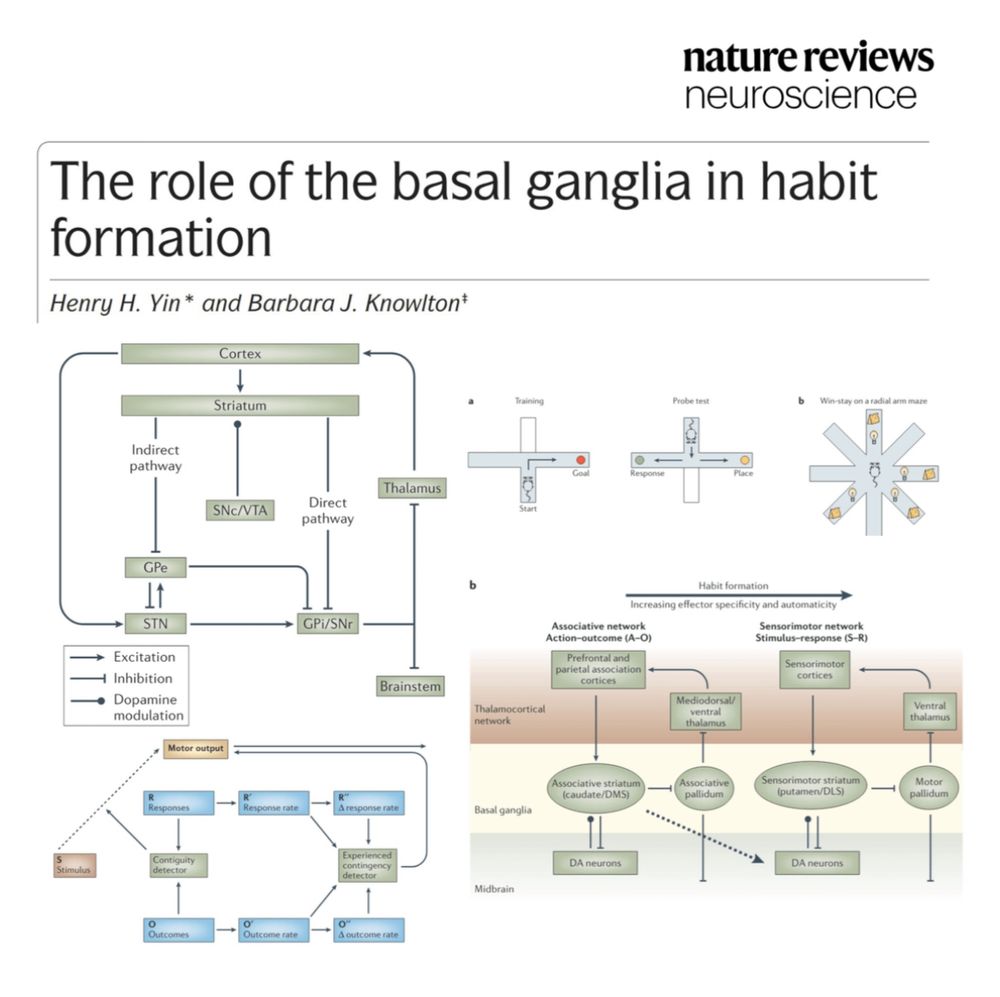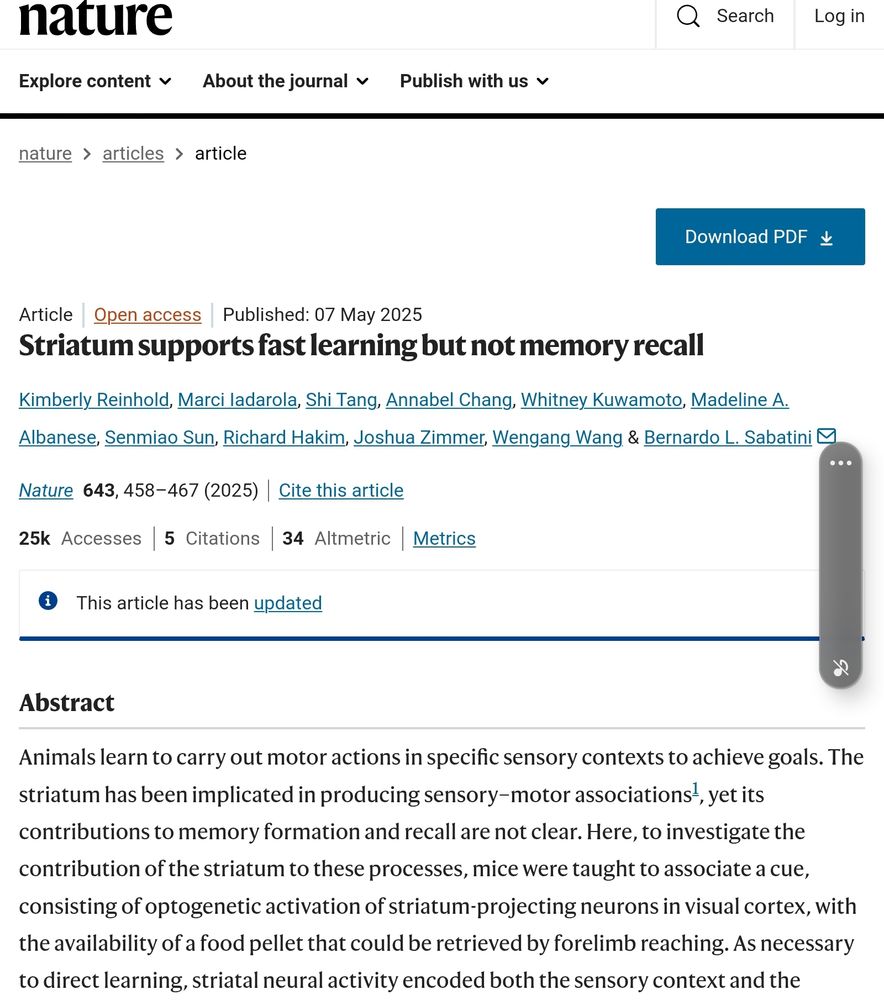

If DA RPE is the emperor, this work SCREAMS it was running naked all the time.
This paper got quite some attention recently. Let's simplify it a bit.
A🧵with my toy model and notes:
#neuroskyence #compneuro #NeuroAI
HPC is known for storing maps of the environment but not so known for generating planned trajectories.
This paper proposes that recurrence in CA3 is crucial for planning.
A🧵with my toy model and notes:
#neuroskyence #compneuro #NeuroAI


HPC is known for storing maps of the environment but not so known for generating planned trajectories.
This paper proposes that recurrence in CA3 is crucial for planning.
A🧵with my toy model and notes:
#neuroskyence #compneuro #NeuroAI
This model tries to explain decision impairments by hyperactive D2 receptors
We can clarify the paper by building a mouse with schizophrenia.
A🧵with my toy model and notes:
#neuroskyence #compneuro #NeuroAI

This model tries to explain decision impairments by hyperactive D2 receptors
We can clarify the paper by building a mouse with schizophrenia.
A🧵with my toy model and notes:
#neuroskyence #compneuro #NeuroAI
If DA RPE is the emperor, this work SCREAMS it was running naked all the time.
This paper got quite some attention recently. Let's simplify it a bit.
A🧵with my toy model and notes:
#neuroskyence #compneuro #NeuroAI

If DA RPE is the emperor, this work SCREAMS it was running naked all the time.
This paper got quite some attention recently. Let's simplify it a bit.
A🧵with my toy model and notes:
#neuroskyence #compneuro #NeuroAI

This proposes a simple subspace architecture for planning.
A toy environment can clarify it.
A🧵with my toy model and notes:
#neuroskyence #compneuro #NeuroAI

This proposes a simple subspace architecture for planning.
A toy environment can clarify it.
A🧵with my toy model and notes:
#neuroskyence #compneuro #NeuroAI
This proposes a simple subspace architecture for planning.
A toy environment can clarify it.
A🧵with my toy model and notes:
#neuroskyence #compneuro #NeuroAI

This proposes a simple subspace architecture for planning.
A toy environment can clarify it.
A🧵with my toy model and notes:
#neuroskyence #compneuro #NeuroAI

Plus BCIs updates from:
- E11 Bio
- Morgan Stanley
- Neuralink
- New England Journal of Medicine
- Precision
- Figure
- Stanford, China and more.
Here's everything you need to know and my opinions:

Plus BCIs updates from:
- E11 Bio
- Morgan Stanley
- Neuralink
- New England Journal of Medicine
- Precision
- Figure
- Stanford, China and more.
Here's everything you need to know and my opinions:
This recent paper from Oxford shows how cortical layers may use a delay trick to learn to predict.
A simple illustration can explain the idea.
A🧵with my toy model and notes:
#neuroskyence #compneuro #NeuroAI

This recent paper from Oxford shows how cortical layers may use a delay trick to learn to predict.
A simple illustration can explain the idea.
A🧵with my toy model and notes:
#neuroskyence #compneuro #NeuroAI
This great recent paper from Oxford shows how cortical layers may use a clever delay trick to learn to predict.
A simple illustration can explain the main idea.
Here is my toy model and notes:

This great recent paper from Oxford shows how cortical layers may use a clever delay trick to learn to predict.
A simple illustration can explain the main idea.
Here is my toy model and notes:
This totally changes our knowledge of how RL works in the brain.
Instead of a new paper, I will dig in what could be the mysterious new mechanism of my last post.
Let's deep dive into theories of cortex:

This totally changes our knowledge of how RL works in the brain.
Instead of a new paper, I will dig in what could be the mysterious new mechanism of my last post.
Let's deep dive into theories of cortex:
This totally changes our knowledge of how RL works in the brain.
Instead of a new paper, I will dig in what could be the mysterious new mechanism of my last post.
Let's deep dive into theories of cortex:

This totally changes our knowledge of how RL works in the brain.
Instead of a new paper, I will dig in what could be the mysterious new mechanism of my last post.
Let's deep dive into theories of cortex:
DA in DLS ≠ RPE but = to stimulus-choice associations relevant to a learning strategy.
This can be beautifully explained as saddles in a loss landscape.
Here is my toy model and notes:

DA in DLS ≠ RPE but = to stimulus-choice associations relevant to a learning strategy.
This can be beautifully explained as saddles in a loss landscape.
Here is my toy model and notes:
Cognitive cortex also uses tuning, and latent variable span a non-linear manifold.
Unlocking this work requires understanding why PSTHs are bad.
Here is my toy model and notes:


Cognitive cortex also uses tuning, and latent variable span a non-linear manifold.
Unlocking this work requires understanding why PSTHs are bad.
Here is my toy model and notes:
I summarized everything from Paradromics, MIT Technology Review, UCL, Nature, Alterego, Meta, Neuralink, World Economic Forum, Duke University and more.
Here's everything you need to know and my opinions:

I summarized everything from Paradromics, MIT Technology Review, UCL, Nature, Alterego, Meta, Neuralink, World Economic Forum, Duke University and more.
Here's everything you need to know and my opinions:
Cognitive cortex also uses tuning, and latent variable span a non-linear manifold.
Unlocking this work requires understanding why PSTHs are bad.
Here is my toy model and notes:


Cognitive cortex also uses tuning, and latent variable span a non-linear manifold.
Unlocking this work requires understanding why PSTHs are bad.
Here is my toy model and notes:
Green-washing is a form of advertising that deceptively uses green PR to persuade the public that an organization's product is environmentally friendly.
Can we call this Brain-washing? 🤦🏾♀️

Green-washing is a form of advertising that deceptively uses green PR to persuade the public that an organization's product is environmentally friendly.
Can we call this Brain-washing? 🤦🏾♀️
I summarized everything from Paradromics, MIT Technology Review, UCL, Nature, Alterego, Meta, Neuralink, World Economic Forum, Duke University and more.
Here's everything you need to know and my opinions:

I summarized everything from Paradromics, MIT Technology Review, UCL, Nature, Alterego, Meta, Neuralink, World Economic Forum, Duke University and more.
Here's everything you need to know and my opinions:
This great recent work shows the striatum is required for skill learning but not skill use (through optogenetics).
Understanding the memory-making mechanism helps understand the core idea.
Here is my toy model and notes:

This great recent work shows the striatum is required for skill learning but not skill use (through optogenetics).
Understanding the memory-making mechanism helps understand the core idea.
Here is my toy model and notes:
This great recent work shows the striatum is required for skill learning but not skill use (through optogenetics).
Understanding the memory-making mechanism helps understand the core idea.
Here is my toy model and notes:

This great recent work shows the striatum is required for skill learning but not skill use (through optogenetics).
Understanding the memory-making mechanism helps understand the core idea.
Here is my toy model and notes:
❤️⭐ I digged out the following 4 papers from my "to read" list.
I am tending to pick #4. Any one you prefer? 🤔




❤️⭐ I digged out the following 4 papers from my "to read" list.
I am tending to pick #4. Any one you prefer? 🤔
But IMHO, the most exciting part is the existence of a neural intention axis.
This is a slap in the face for modern motor neuro, worth simplifying for better understanding.
Here are my notes and toy model:


But IMHO, the most exciting part is the existence of a neural intention axis.
This is a slap in the face for modern motor neuro, worth simplifying for better understanding.
Here are my notes and toy model:
🤓 NatComms paper corrections resubmitted.
🎉 Reached >17K people for the first time with something I love: making papers easy to understand.
👨🏽⚕️Dr confirms worrying issue was nothing to worry.
💸 ETH hits all time high.
But I need to tell you this:
🤓 NatComms paper corrections resubmitted.
🎉 Reached >17K people for the first time with something I love: making papers easy to understand.
👨🏽⚕️Dr confirms worrying issue was nothing to worry.
💸 ETH hits all time high.
But I need to tell you this:
I can hardly hold back my tears, especially with the last one.
I watch this video every once in a while to remind myself that working on brain chips is hard but worth it 🥲
I can hardly hold back my tears, especially with the last one.
I watch this video every once in a while to remind myself that working on brain chips is hard but worth it 🥲

